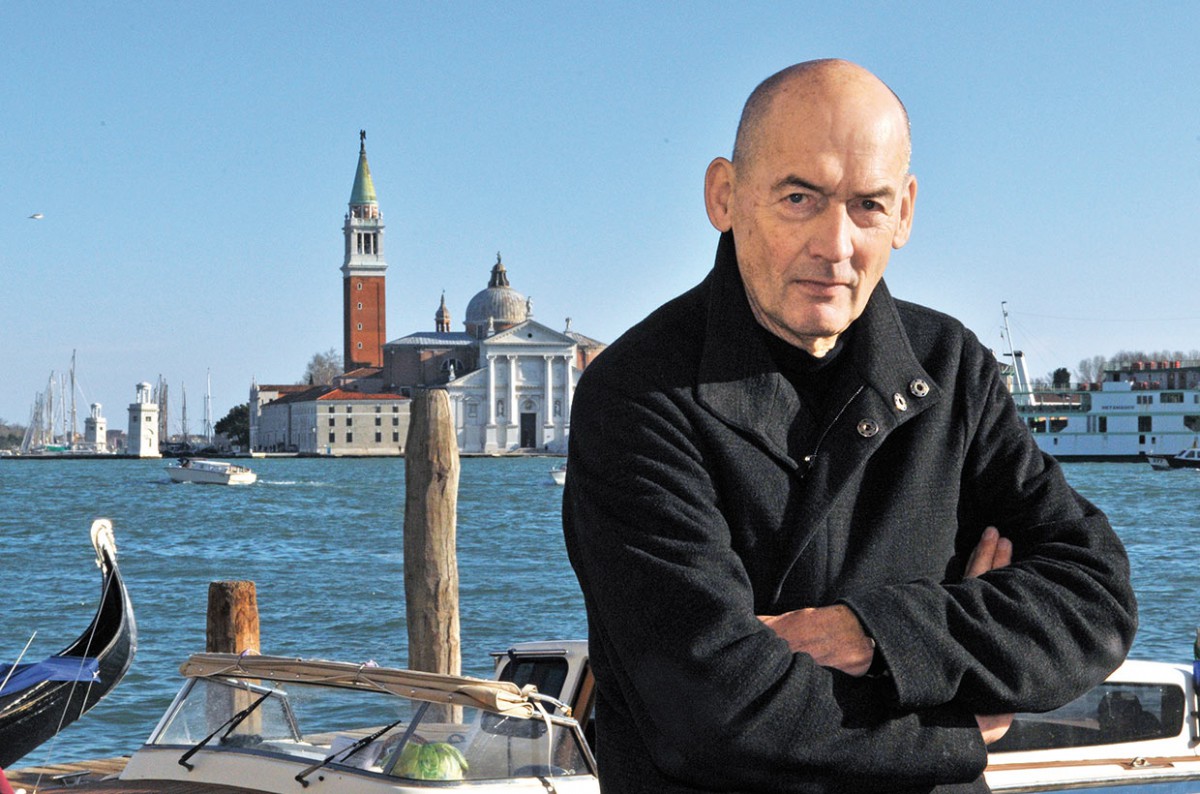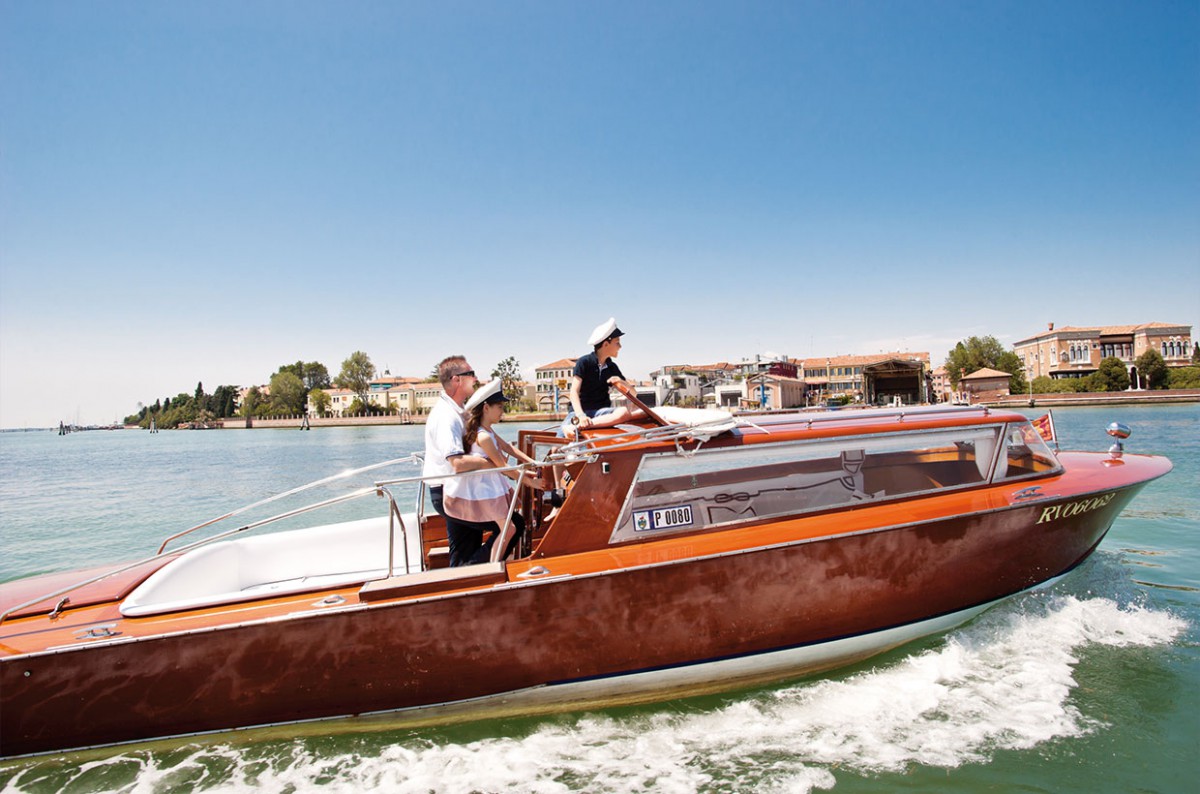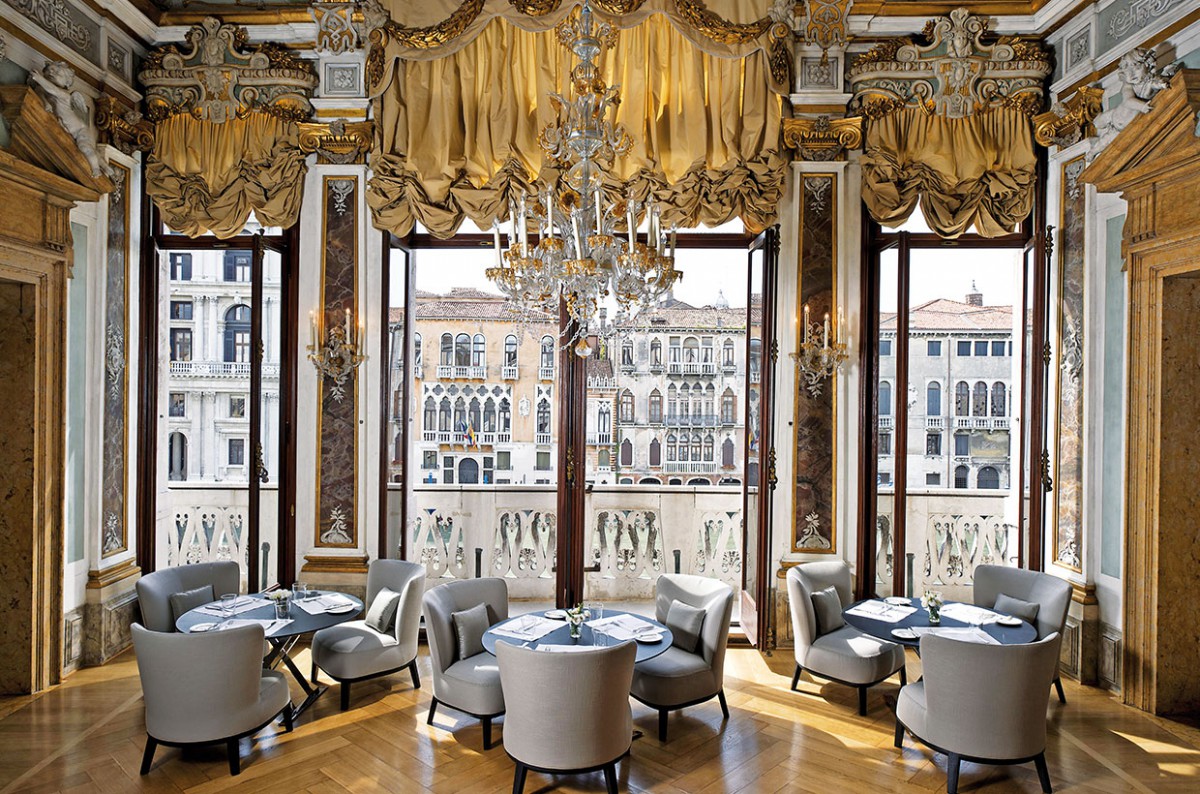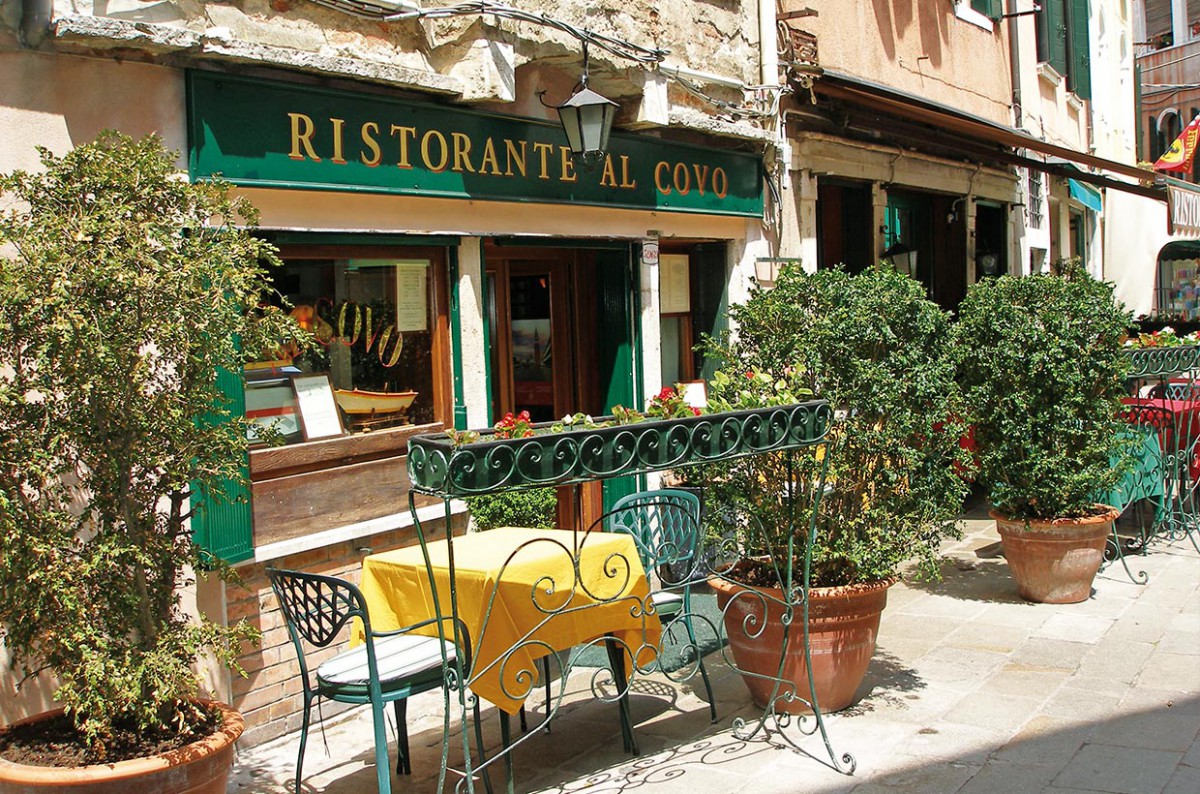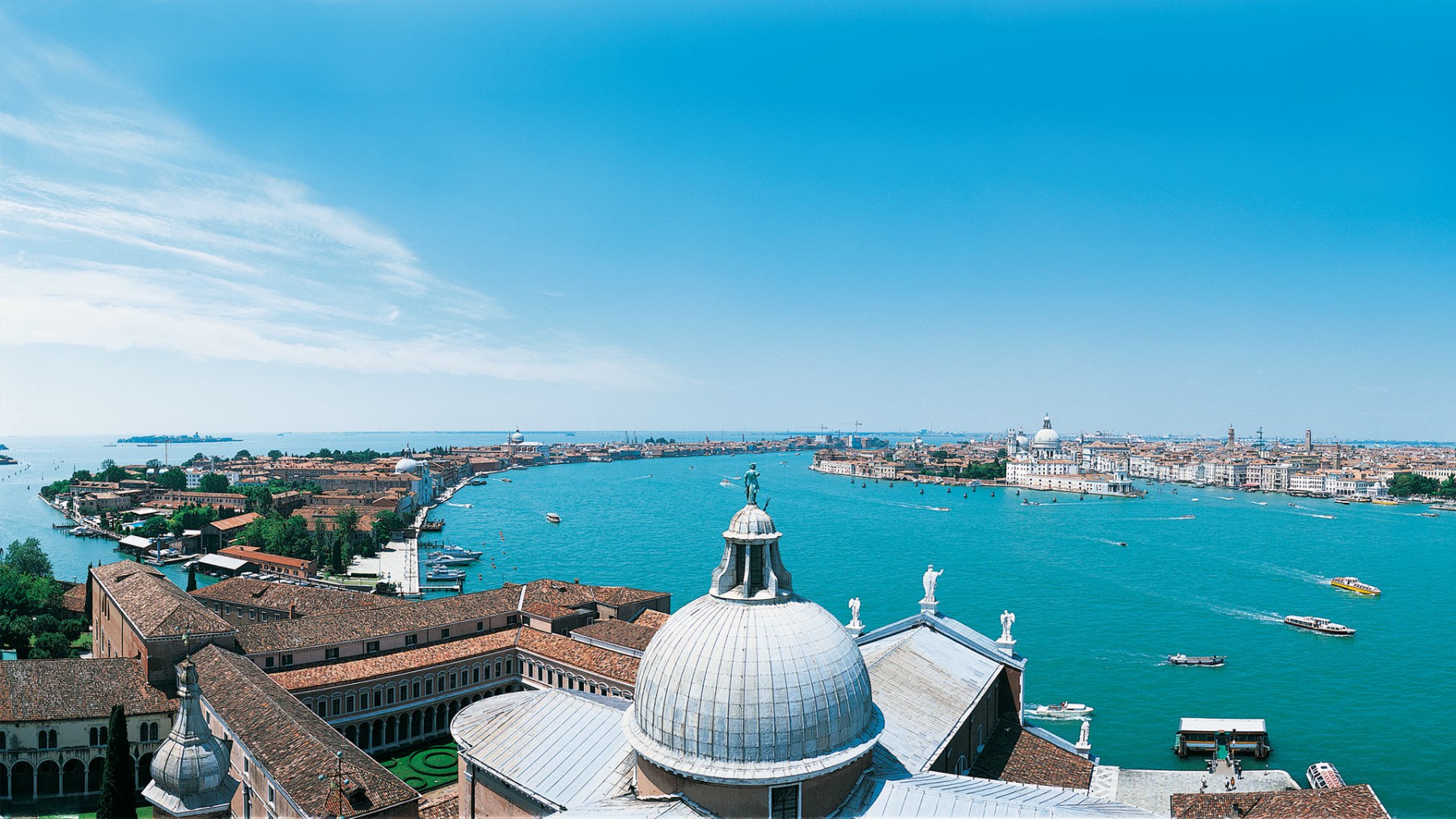Architecture Biennale in Venice by Jörg Zimmermann | 20th June, 2014 | Travel
This year, Venice is a must for architects and architecture lovers. “Fundamentals” is the title of the 14th Architecture Biennale chosen by this year’s curator Rem Koolhaas. The exhibitions in the “Arsenale” and “Giardini” are going to be an exploration of the past, the present and the future of the discipline.
Venice is the myth of a city turned into reality, erected on millions of poles in the shallow waters of a lagoon. The whole city is a unique architectural idea, a prototype and the vision of an urban society manifest in stone. So, where better to discuss architecture, its origins, its current state and its effect than in a place which confronts you with architecture with such immediacy? Maybe this is also part of the reason why architect Rem Koolhaas has asked his colleagues to reflect on the discipline. “I would like to discuss architecture, not architects,” says the curator of the 14th Architectural Biennale in Venice. Thus, the discussion about this year’s series of exhibitions on architecture has started. Once again, it has turned the city on the lagoon into the most important meeting place for architects and architecture enthusiasts from around the world.
Rem Koolhaas wants to examine the “fundamentals,” those simple elements which are essential to architecture and “which every architect employs, always and everywhere,” says Koolhaas. In Venice, with its magnificent palazzos located next to ordinary houses, its barely manageable maze of alleys, its “campi” (squares) and “campielli” (little squares), as well as canals, bridges and jetties, these fundamentals become uniquely obvious. Floors, walls, ceilings, roofs, doors, windows, façades – the list of elements which is to stimulate the discussion about architecture, is extensive. With this concept, Koolhaas rather distances himself from previous biennales. It is an approach praised by Paolo Baratta, President of the Biennale: “With Koolhaas, our aim is to create an exceptional, research-oriented Architecture Biennale.”
In 2012, Koolhaas’ predecessor, the English architect David Chipperfield had, in a grand gesture, still tried to find some “common ground.” Well-known colleagues had contributed their works which, however, often felt like they belonged to separate shows. Vanity often plays a part in the world of architecture, too. So an event like the Architecture Biennale can quickly become little more than a very public marketplace. In order to break out of the usual scenario, focusing on depth rather than on “surface elements” seems to be close to Rem Koolhaas’ heart. Having founded the world-renowned and globally active architecture firm OMA together with Elia Zenghelis, Zoe Zenghelis and Madelon Vriesendorp in Rotterdam in 1975, the Dutchman also made a name for himself as an architectural theorist early on. Since 1998, Koolhaas has been running his think-tank AMO, whose research projects go far beyond the subjects usually discussed in architecture.
So will we be treated to dry architectural theory delivered in front of the marvelous backdrops of Venice’s Canal Grande, St Mark’s Square, Doge’s Palace and Rialto Bridge? That is a completely groundless worry. The official “Arsenale” and “Giardini” exhibition spaces alone will guarantee a special experience. The latter is the traditional and spacious biennale area, which will also feature the country pavilions. “‘Fundamentals’ will consist of three interlocking exhibitions that together illuminate the past, present and future of our discipline,” Koolhaas says, explaining the specifics of his biennale concept. According to Koolhaas, this look back into the past is designed to help reconstruct how architecture arrived at its current situation, while also allowing speculation on its future.
In the main pavilion located in the “Giardini,” the “Elements of architecture” exhibition puts the spotlight on the basic elements of the discipline. For the exhibits in the country pavilions, Rem Koolhaas has framed a leitmotif: “Absorbing modernity 1914–2014.” This expresses his desire for the curators of the 65 participating nations to investigate “the process of the erasure of national characteristics in architecture in favor of the almost universal adoption of a single modern language.” This represents a real challenge for the creators of the national exhibitions, who apart from their own ideas and the expectations of the experts now also have to integrate the curator’s theoretical superstructure into their shows.
The German Pavilion will this year be directed by Zurich-based architects Alex Lehnerer and Savvas Ciriacidis. The title of their production “Bungalow Germania” hints at its content, but ahead of the opening the details of the show are being guarded almost like state secrets. Memories of the German contribution in 2012 are very positive: Muck Petzet had examined the approach to current building stocks under the heading “Reduce/Reuse/Recycle.” The neighboring British and French pavilions also promise many auspicious collections. For the “grande nation” Jean-Louis Cohen, Professor of the History of Architecture in Paris and New York, will be asking whether the modern age represents a promise or a threat. As part of this, he will call on protagonists like Jean Prouvé and Jacques Tati as witnesses. The British curators at work are FAT Architecture, together with Crimson Architectural Historians. They will be conducting their research under the title “A clockwork Jerusalem.” FAT had already produced an illuminating exhibition at the last biennale with the title “The museum of copying.” The show in the palazzo hosted by Switzerland also promises to be exciting. The Swiss have appointed a tireless creator of exhibitions, Hans-Ulrich Obrist. A native of Thurgau canton, he is currently
co-director of the Serpentine Gallery in London and has commissioned Lucius Burckhard and Cedric Price to execute his vision. Obrist promises “a stroll through a fun palace.”
Host nation Italy is being singled out for particular praise by Rem Koolhaas. “Monditalia” is the name of the third strand of his biennale concept. As part of this, exhibitions, events and theatre productions will be examining not just architecture, but politics, economics, religion and technology. While in the “Giardini” subjects will be explored in depth, the emphasis at the “Arsenale” will be on a broad spectrum of issues. “There, the other festivals of the biennale – film, dance, theatre and music – will be mobilized to contribute to a comprehensive portrait of the host country,” says Koolhaas. Given the abundance of the events on offer, it is lucky that the 14th Architecture Biennale already opens in June, rather than in August, as is customary. JZ
